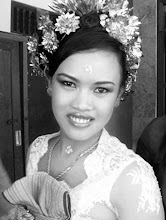The state of Karangasem, on the island of Bali, was in existence by the middle of the seventeenth century century. The dynasty claims descent from the last Mahapajit Governor of Bali at the time of the collapse of that Empire. The state became powerful during the late seventeenth century, conquering the neighbouring Lombok and establishing several principalities on that island. During the last years of the next century, Gusti Gede Ngurah Karangasem [Devata Tohpati], extended control over Buleleng.
The state was conquered by the Raja of Mataram, a collateral relative in 1839. The next ruler, Gusti Gedé Ngurah Made Karangasem, accepted Dutch sovereignty over his realm in 1841, but later repudiated this, along with the other Balinese Rajas. Karangasem and Buleleng suffered completed defeat at Dutch hands during the Lombok War in 1849. The Dutch then annexed the state to the Ratu Agung of Salaparang, their ally. He appointed two of his nephews as successive Regents of Karangasem. After the defeat and extinction of Salaparang in 1893, the Dutch re-established the Karangasem principality under the ruler of the late Regent's family. However, full self-rule did not follow until 1938. The principality acceded to the Indonesian Republic in 1950, but the Raja continued to reign as nominal Raja until his death in 1991. His younger brother succeeded him as Head of the Royal House, but his installation, according to traditional custom, did not follow.
The state was conquered by the Raja of Mataram, a collateral relative in 1839. The next ruler, Gusti Gedé Ngurah Made Karangasem, accepted Dutch sovereignty over his realm in 1841, but later repudiated this, along with the other Balinese Rajas. Karangasem and Buleleng suffered completed defeat at Dutch hands during the Lombok War in 1849. The Dutch then annexed the state to the Ratu Agung of Salaparang, their ally. He appointed two of his nephews as successive Regents of Karangasem. After the defeat and extinction of Salaparang in 1893, the Dutch re-established the Karangasem principality under the ruler of the late Regent's family. However, full self-rule did not follow until 1938. The principality acceded to the Indonesian Republic in 1950, but the Raja continued to reign as nominal Raja until his death in 1991. His younger brother succeeded him as Head of the Royal House, but his installation, according to traditional custom, did not follow.


Tidak ada komentar:
Posting Komentar